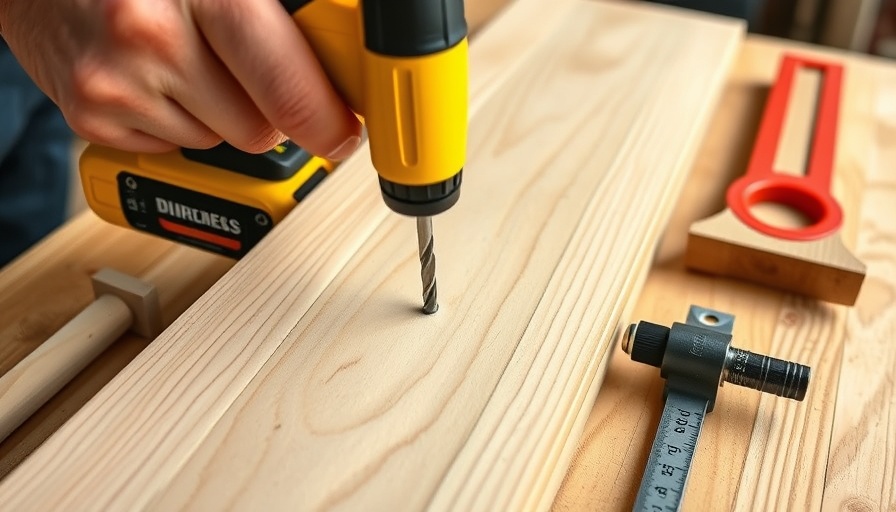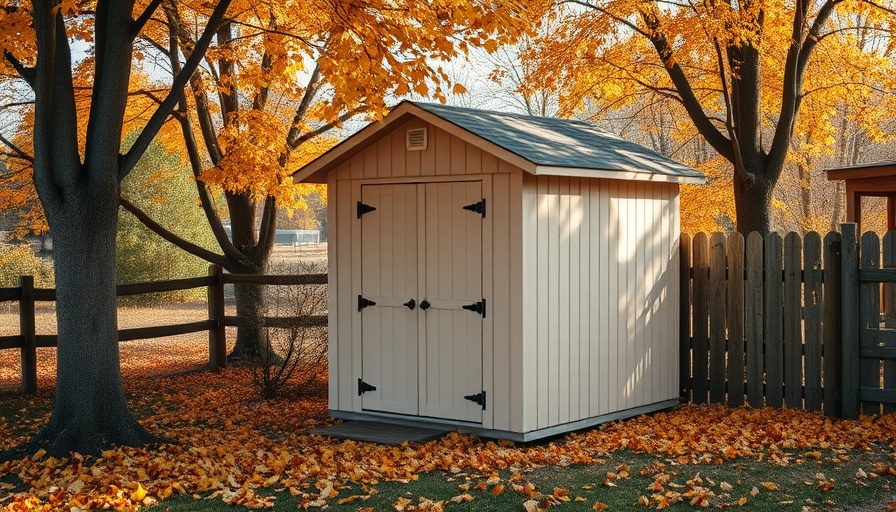
Mastering the Basics: Understanding Drill Bits and Their Use
When it comes to home repairs and DIY projects, understanding the right tools is essential to success. A drill is one of the most versatile tools in a homeowner's arsenal, but the effectiveness of your drilling largely hinges on the type of drill bit you use. Various types exist, each suited for different materials and applications.
The Importance of Choosing the Right Drill Bit
Using the correct drill bit can significantly impact both your project’s outcome and your efficiency. From wood to metal, masonry to plastic, drill bits are designed with specific tasks in mind. A wood bit is not effective for metal, just as a masonry bit will struggle with drywall. Understanding the differences can prevent wasted time and materials.
Diving Deeper into Bit Types: What You Need to Know
Here’s a rundown of common drill bit types:
- Twist Bits: These are the most common bits and are designed for general drilling into wood and plastic. They have a spiral design that helps in removing debris.
- Spade Bits: Great for drilling larger holes in wood, spade bits are flat and allow for more substantial cuts.
- Masonry Bits: These have a harder tip for drilling into brick, concrete, and stone. They are typically made of tougher materials like carbide.
- Forstner Bits: If you’re looking to create clean, flat-bottomed holes, Forstner bits are the way to go. They work particularly well for cabinetry and furniture.
Materials Matter: Choosing the Right Drill for the Job
The material of a drill bit is just as crucial as its shape. Most bits are made of high-speed steel (HSS), providing durability and resistance against heat. However, for more demanding applications, look for bits made from cobalt or carbide, which can withstand harsher conditions.
Best Practices for Using Your Drill
Knowing how to use a drill properly is as important as having the right bits. Here are a few tips:
- Start with a pilot hole: When drilling into tougher materials, creating a pilot hole can help prevent bit damage.
- Use the correct speed settings: Higher speeds work best for smaller bits and softer materials, while lower speeds are necessary for larger bits and denser materials.
- Keep the drill steady: Tension and pressure should be consistent to avoid breaking the bit. Let the tool do the work.
Safety First: Precautions You Shouldn't Ignore
Never overlook safety when working with drills. Always wear protective eyewear to shield against flying debris. Additionally, ensure the workspace is clean and organized to prevent accidents.
Common Misconceptions: Debunking Drill Myths
Many homeowners fall prey to myths regarding drill use. For instance, some believe that all drill bits are universal. This is far from true, as using the wrong bit can lead to damage. Another common misconception is that applying more pressure leads to better results; in reality, this can cause unnecessary wear and even damage to both the bit and the material.
Conclusion: Empower Yourself with Knowledge
Arming yourself with the right knowledge about drill bits, materials, and safety practices will enable you to approach your next DIY project or home repair with confidence. Take the time to explore different types of bits, understand their uses, and never hesitate to practice. After all, the best projects come from well-informed and prepared homeowners!
 Add Row
Add Row  Add
Add 



Write A Comment